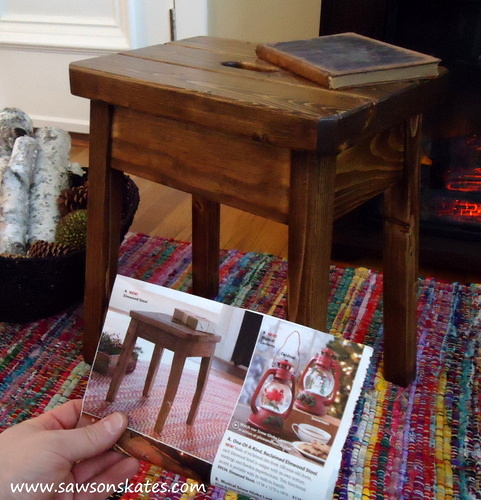
I've never designed a knockoff piece of furniture, but after I thumbed through the Holiday issue of the Plow & Hearth catalog I decided it was time! Among all of the natural fir wreaths and fireplace accessories, I spotted the "Elmwood Stool".
Preparation
Please read through the entire plan and all comments before beginning this project. It is also advisable to review the Getting Started Section. Take all necessary precautions to build safely and smartly. Work on a clean level surface, free of imperfections or debris. Always use straight boards. Check for square after each step. Always predrill holes before attaching with screws. Use glue with finish nails for a stronger hold. Wipe excess glue off bare wood for stained projects, as dried glue will not take stain. Be safe, have fun, and ask for help if you need it. Good luck!
It is always recommended to apply a test coat on a hidden area or scrap piece to ensure color evenness and adhesion. Use primer or wood conditioner as needed.















Comments
Ana White Admin
Mon, 11/30/2015 - 12:20
Thanks for sharing!
It looks great, thank you!
In reply to Thanks for sharing! by Ana White Admin
Knot Perfect
Mon, 11/30/2015 - 19:52
Thank you :)
Thank you :)